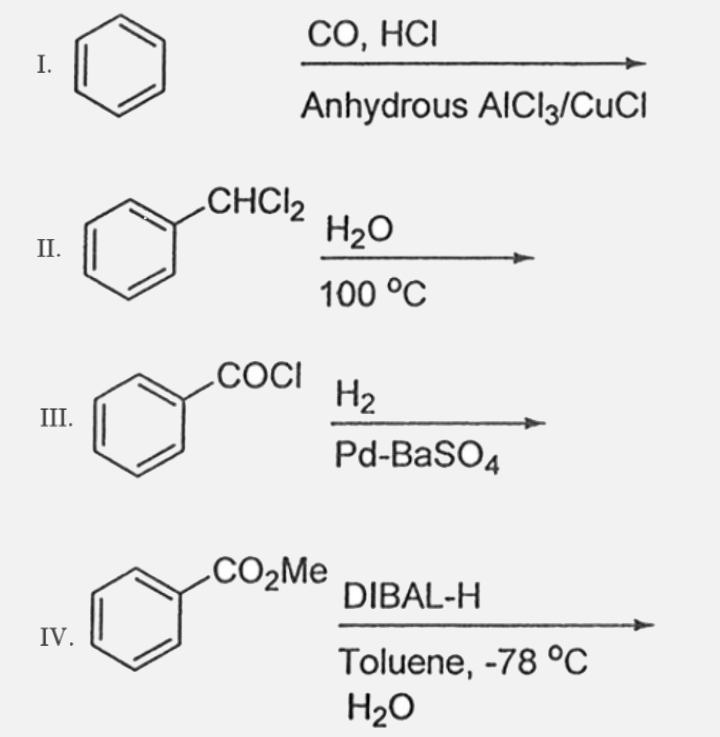Among the following , the state funcation (s) is (are)
Internal energy
Molar enthalpy
Reversible expansion work
Irreversible expansion work
The correct Answer is:A, B
To determine which of the given options are state functions, we need to understand the concept of state functions in thermodynamics.
1. Definition of State Functions:
A state function is a property of a system that depends only on the current state of the system, not on the path taken to reach that state. Examples include internal energy (U), enthalpy (H), pressure (P), volume (V), and temperature (T).
2. Identify the Options:
We need to analyze the given options (not provided in the question, but let's assume they include internal energy, molar enthalpy, heat, and work).
3. Evaluate Each Option:
- Internal Energy (U): This is a state function because it depends only on the state of the system (temperature, pressure, volume) and not on how the system arrived at that state.
- Molar Enthalpy (H): This is also a state function because it is defined in terms of internal energy and pressure-volume work, and it depends only on the state of the system.
- Heat (q): This is not a state function; it is a path function because it depends on the specific process or path taken to transfer energy.
- Work (W): Similar to heat, work is also a path function as it depends on the process followed to do the work.
4. Conclusion:
Based on the evaluation, the state functions among the options are:
- Internal Energy (U)
- Molar Enthalpy (H)
Final Answer:
The state functions are Internal Energy (U) and Molar Enthalpy (H).
---
A state function is a property of a system that depends only on the current state of the system, not on the path taken to reach that state. Examples include internal energy (U), enthalpy (H), pressure (P), volume (V), and temperature (T).
We need to analyze the given options (not provided in the question, but let's assume they include internal energy, molar enthalpy, heat, and work).
- Internal Energy (U): This is a state function because it depends only on the state of the system (temperature, pressure, volume) and not on how the system arrived at that state.
- Molar Enthalpy (H): This is also a state function because it is defined in terms of internal energy and pressure-volume work, and it depends only on the state of the system.
- Heat (q): This is not a state function; it is a path function because it depends on the specific process or path taken to transfer energy.
- Work (W): Similar to heat, work is also a path function as it depends on the process followed to do the work.
Based on the evaluation, the state functions among the options are:
- Internal Energy (U)
- Molar Enthalpy (H)
The state functions are Internal Energy (U) and Molar Enthalpy (H).
Topper's Solved these Questions
- THERMODYNAMICSBOOK - VMC MODULES ENGLISHCHAPTER - THERMODYNAMICSEXERCISE - LEVEL-2
50 Videos
- THERMODYNAMICSBOOK - VMC MODULES ENGLISHCHAPTER - THERMODYNAMICSEXERCISE - LEVEL-2 (NUMERICAL VALUE TYPE)
15 Videos
- THERMODYNAMICSBOOK - VMC MODULES ENGLISHCHAPTER - THERMODYNAMICSEXERCISE - LEVEL-0 (LONG ANSWER TYPE (5 MARKS))
6 Videos
- THERMOCHEMISTRYBOOK - VMC MODULES ENGLISHCHAPTER - THERMOCHEMISTRYEXERCISE - JEE ADVANCED (ARCHIVE)
31 Videos
- THERMODYNAMICS & THERMOCHEMISTRYBOOK - VMC MODULES ENGLISHCHAPTER - THERMODYNAMICS & THERMOCHEMISTRYEXERCISE - Impeccable
48 Videos
Similar Questions
Knowledge Check
Among the following incorrect statement (s) is/are :
Ain alkenes the boiling point increases with a rise in molecular massBbranching in an alkane decreases the boiling pointCboiling point of an odd numbered carbon atoms alkanes is lower than both of its even numbered neighboursDmelting point of an odd numbered carbon atoms alkane is lower than next even numbered neighbours.
Among the following, the function (s) on which LMVT theorem is applicable in the indecatd intervals is/are
View SolutionAmong the following, the aromatic compound is
View SolutionAmong the following the weakest base is .
View SolutionAmong the following the strongest acid is
View SolutionAmong the following, the number of reaction(s) that produce(s) benzaldehyde is

View SolutionAmong the following reactions (s), which gives (give) tert-butyl benzene as the major product?
View Solution
Among the following which statement(s) is/are correct:
View Solution
